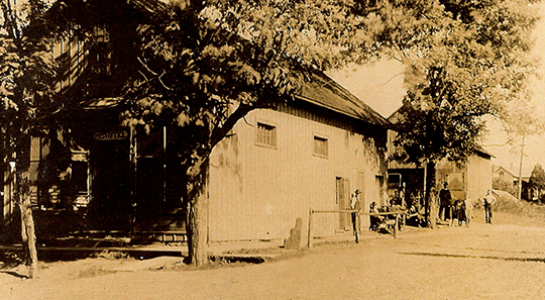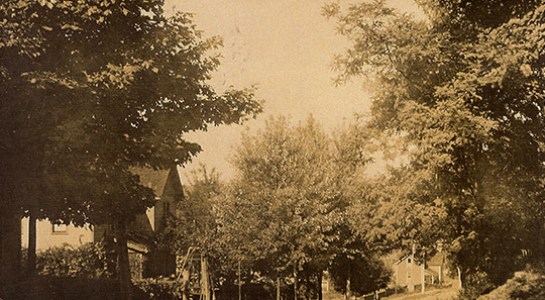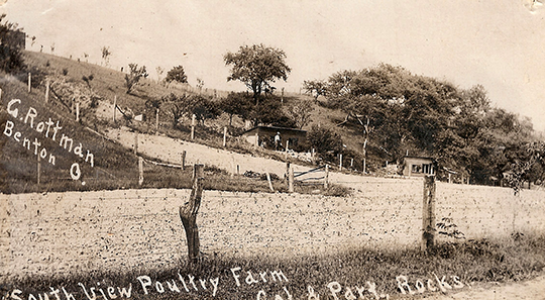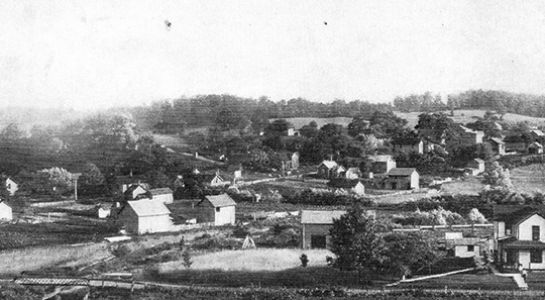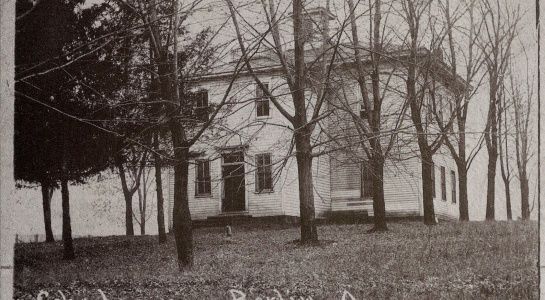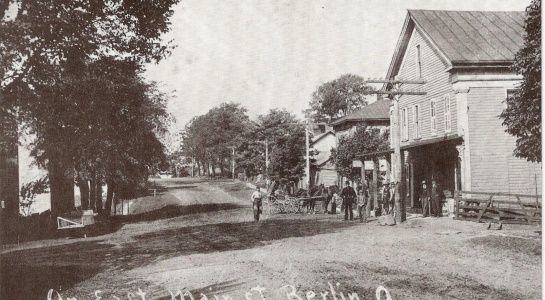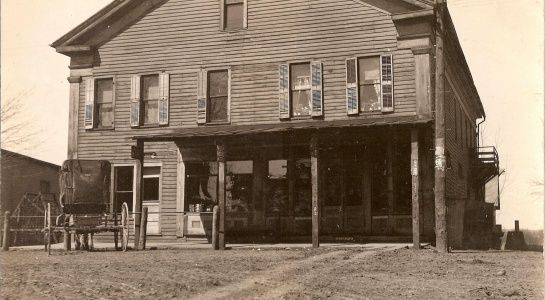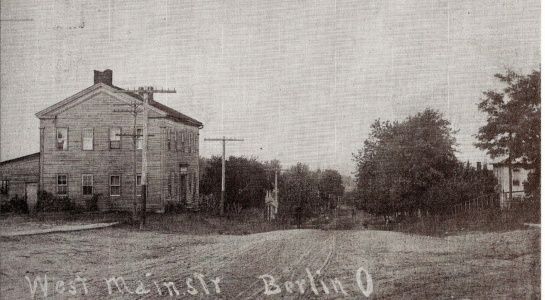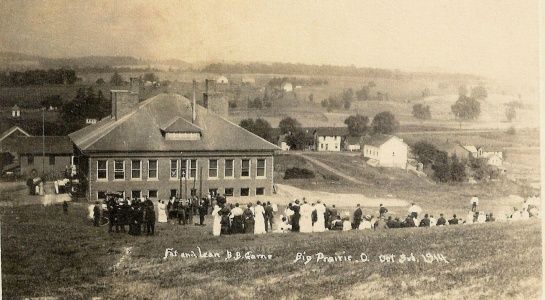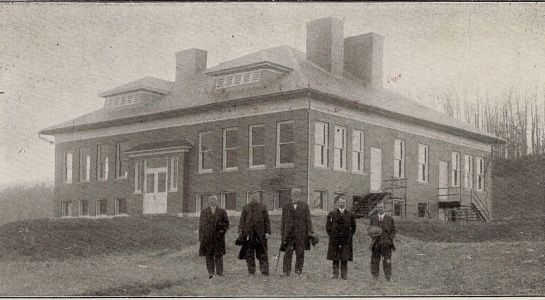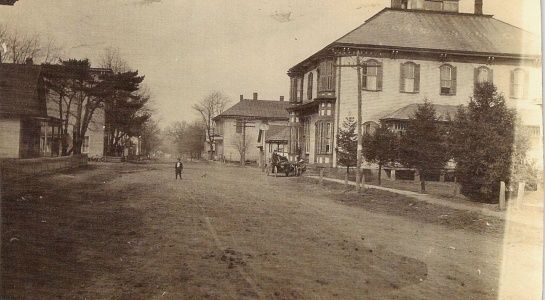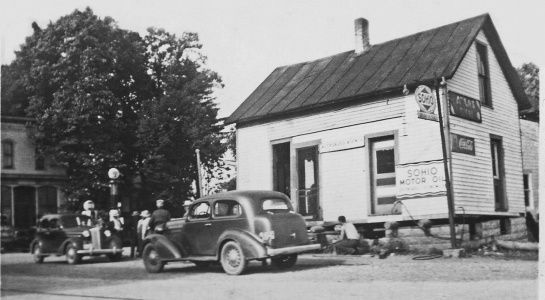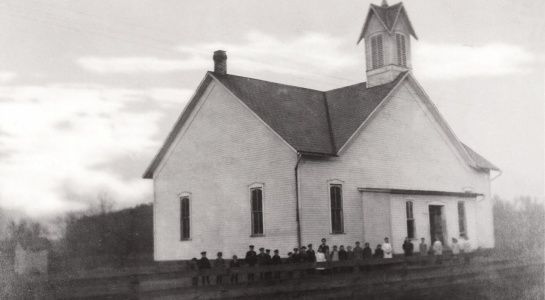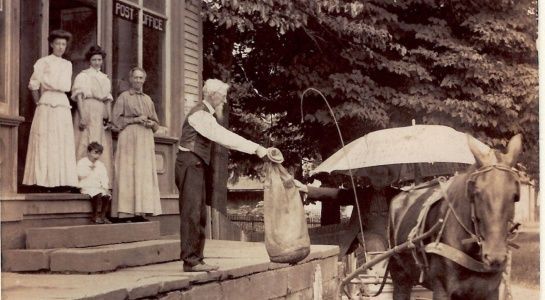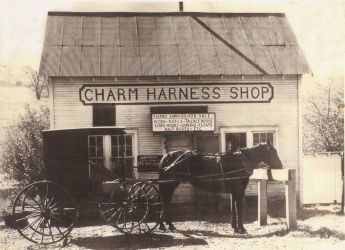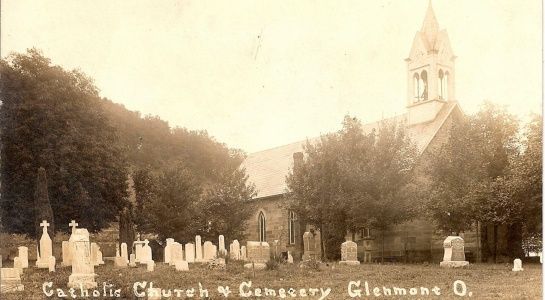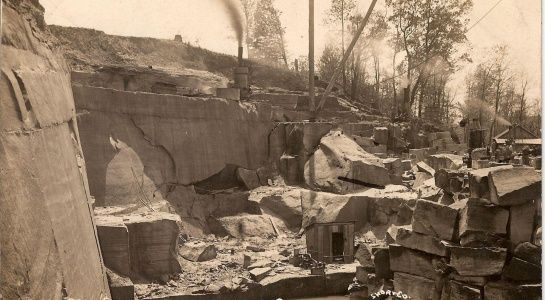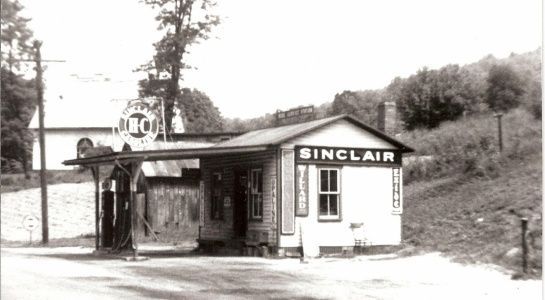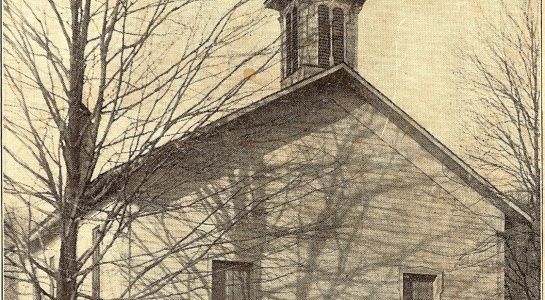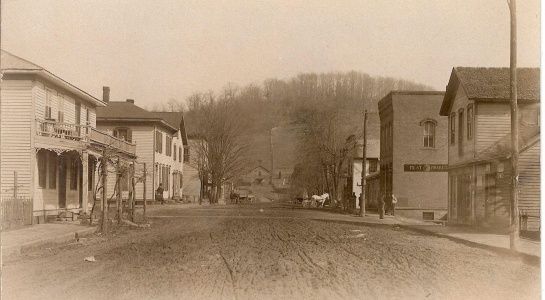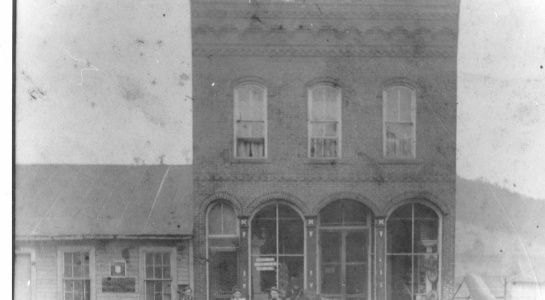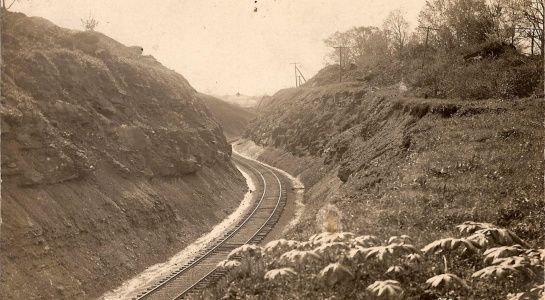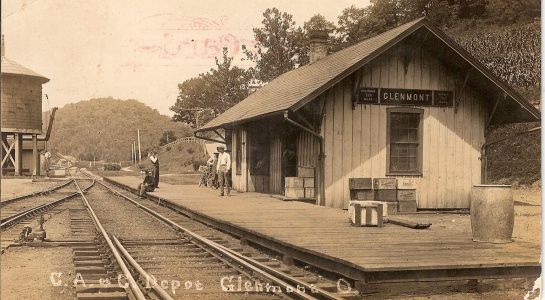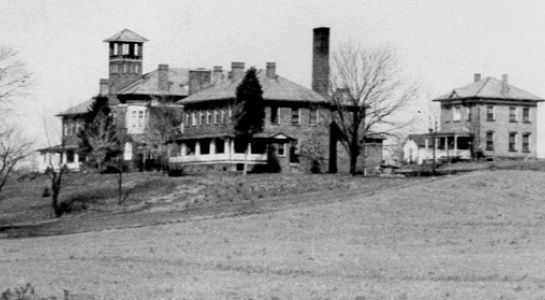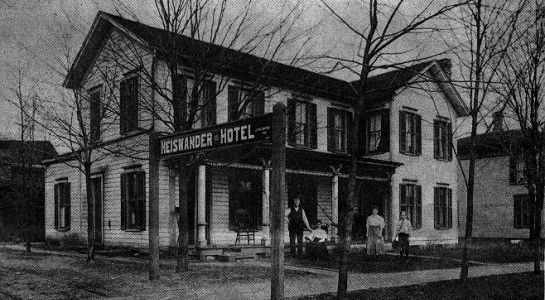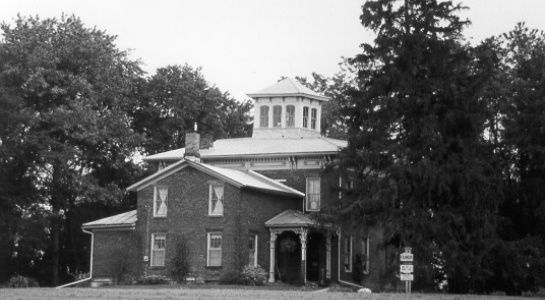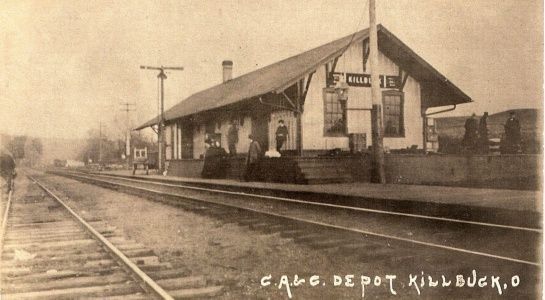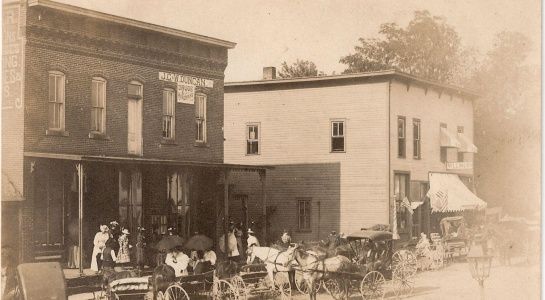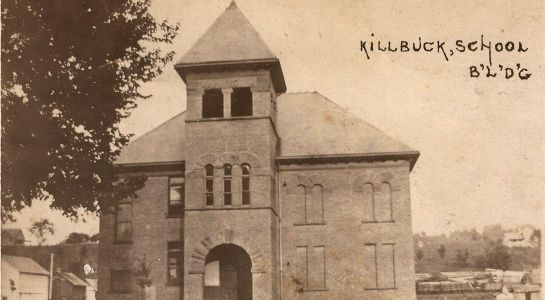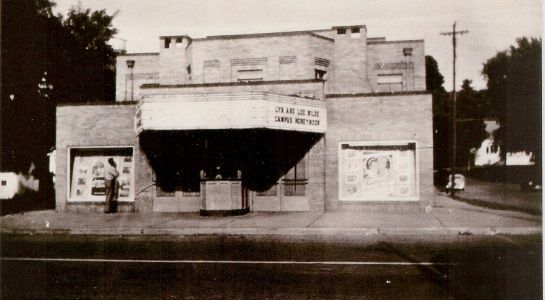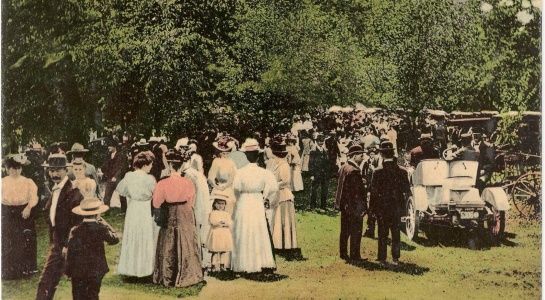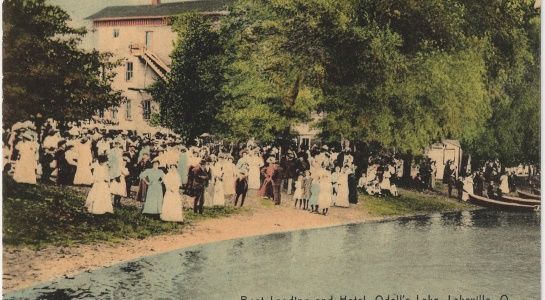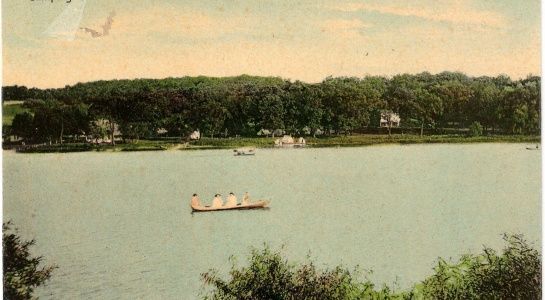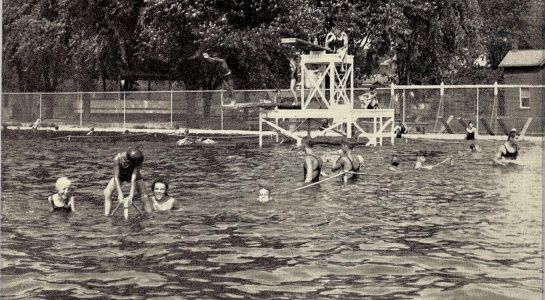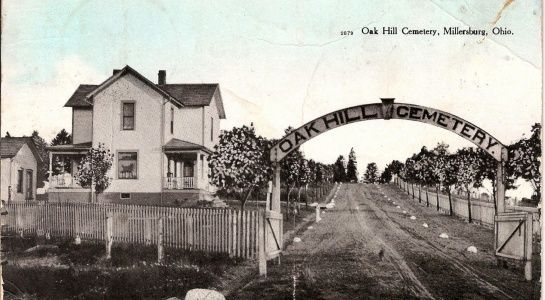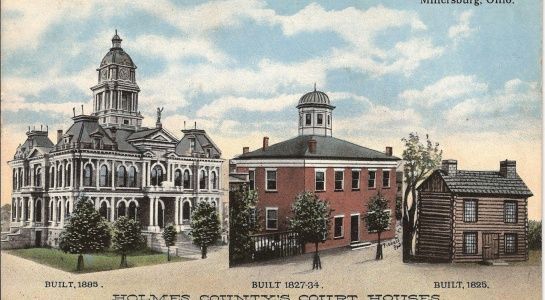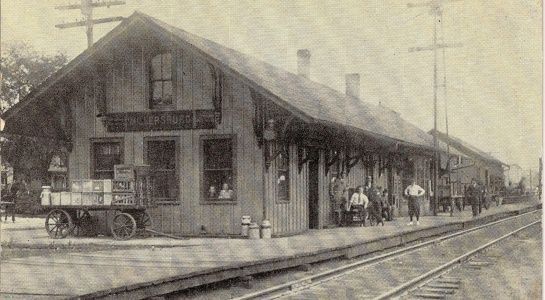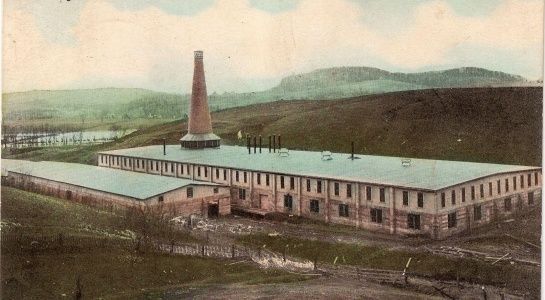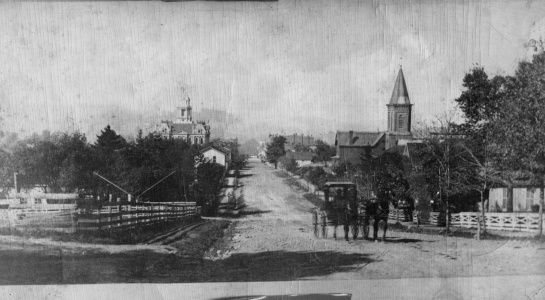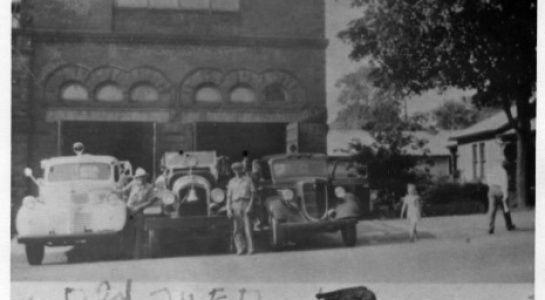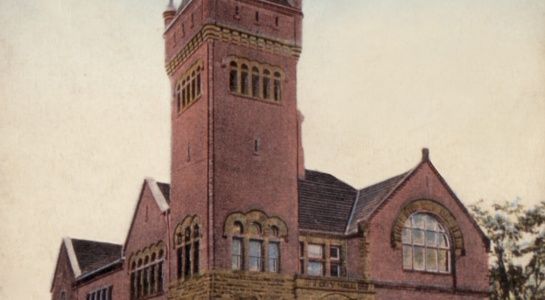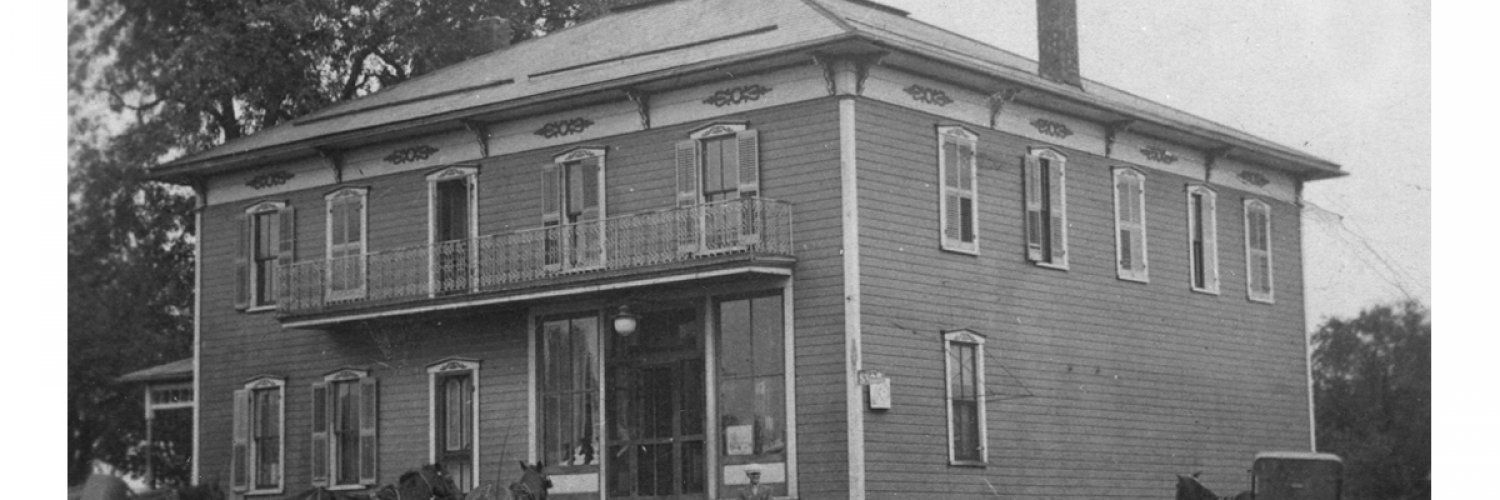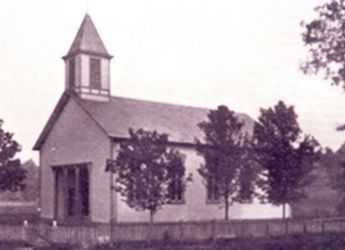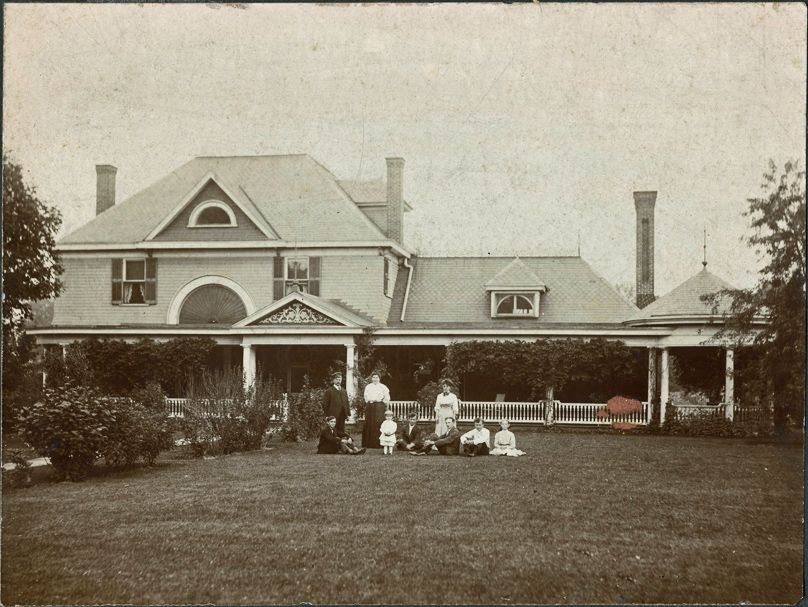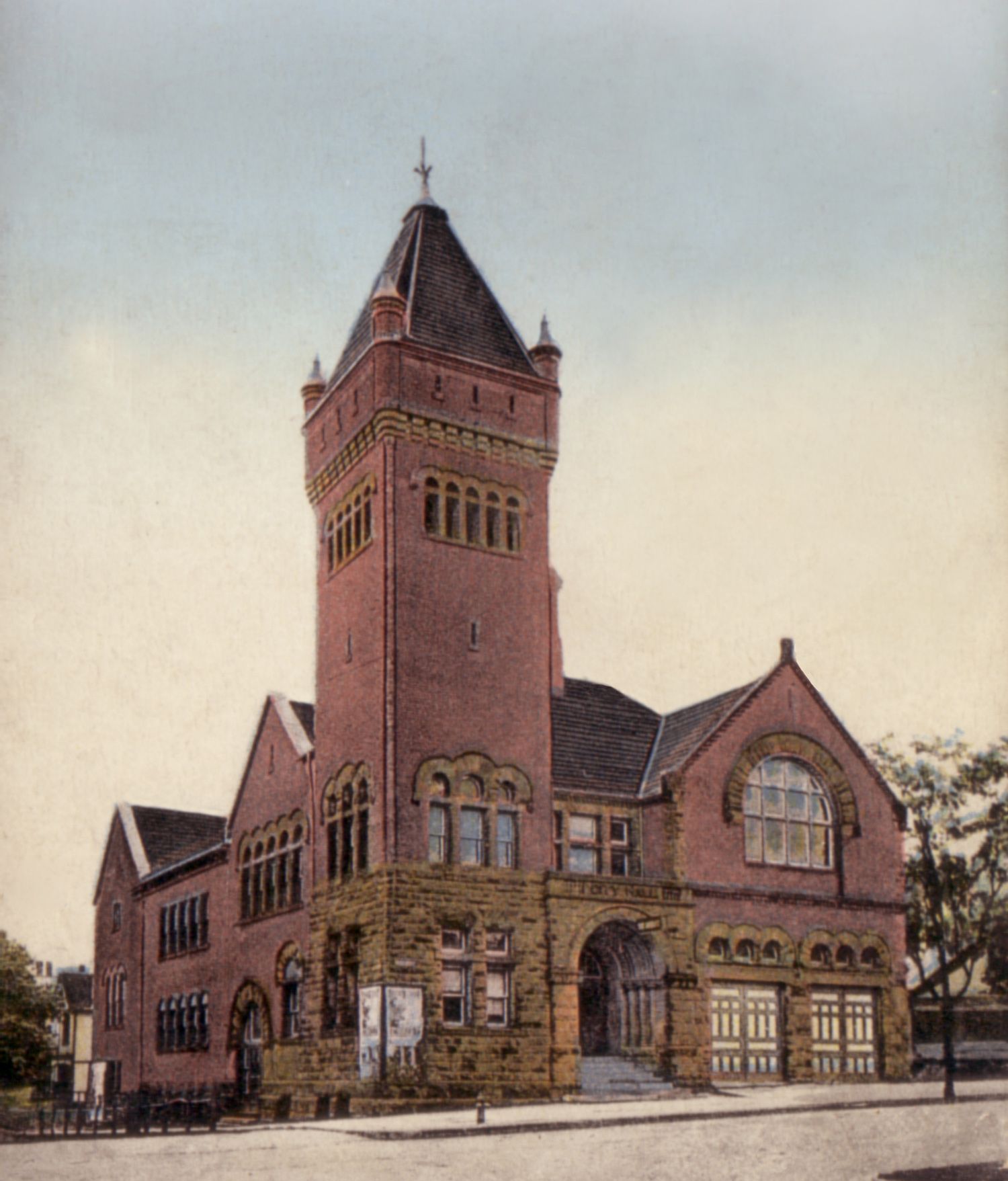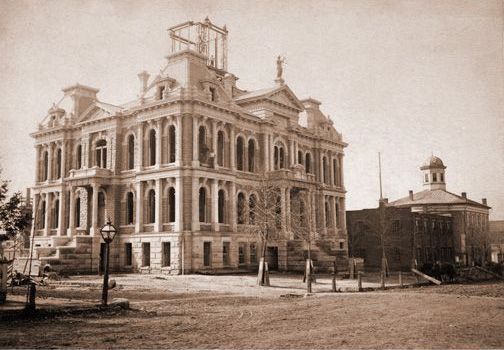Historical Gallery
Historical Gallery
Historical Towns
BECK'S MILLS
Beck's Mills had its start in 1822 when the Beck family arrived in Doughty Valley. A dam was built across Doughty Creek and a sawmill was constructed. Later a four-story gristmill for making wheat flour and corn meal was built along with a well supplied general store, a blacksmith shop, and a post office. However, after the railroad came to Millersburg in 1854 the little community ceased to grow since more products and services were easily available in the larger town. Today little remains of the once-thriving little community.
BENTON
Benton was laid out in 1829, and it was the first real town to develop commercially in the county. It had gristmills, a woolen mill, a factory to make windmills and spinning wheels and several distilleries where whiskey could be purchased for twenty-five cents a gallon. Benton also had two blacksmith shops, a bottle factory, a sawmill, a wagon-maker's shop, and an elevator. There used to be ten industries getting their power from the dams along Martin's Creek. In the early years Benton was the largest and most important commercial center in Holmes County.
BERLIN
The village of Berlin is the oldest existing village in Holmes County. It was laid out in 1816 with 108 plots, and all plots were purchased by 1821. Gradually Berlin became a thriving village and the center of commerce for the surrounding area. When the National Road was completed and Zane's Trace was improved to permit wagon traffic southward to Zanesville, storekeepers could more easily send wagons to obtain needed supplies. It was at this time that Berlin grew rapidly and out-distanced Benton as an outstanding business center. The town had machine shops, a foundry, dry goods stores, hotels, tailor shops, hat factories, blacksmith shops, a tannery, a chair factory, grist mills sawmills, and distilleries. In fact, the first real factory in the county was built in Berlin in 1847. This company made the first threshers to be manufactured in Ohio. Berlin was also home to the Berlin Academy which opened in the 1860s.
BIG PRAIRIE
Big Prairie was laid out in 1871. It was the Monitor Sadiron Company that put Big Prairie on the map. There was also a Monitor Hotel and a Monitor Theater where silent movies were shown, and various other business shops and stores including a bank that is still in operation today. But with the coming of electricity, sadirons were no longer in demand and the factory in Big Prairie closed as did the hotel and theater.
BUNKER HILL
The small community of Bunker Hill was settled in Berlin Township. A major attraction for early settlers was good soil and ample water supplied by springs that dotted the area. Farming, therefore, supported most early pioneer families.
CHARM
Charm began as a village called Stevenson around the 1860s. In 1886 the community made application for a post office. The government submitted a list of town names from which the patrons of the post office could choose. The patrons chose Charm. The community also had another name change being that originally it was recorded to be in Germantown Township. However, in 1918 Holmes County changed the township name to Clark Township. This is the only township in Holmes County that has undergone a name change. Early records for Charm show the following businesses: a harness shop, a jewelry & watch-repair shop, a cheese factory, feed mills, & general stores.
CLARK
Clark was laid out in Mechanic Township in 1818. It is unique in that the town portion north of Cross Street was located in Holmes County, and the part south of Cross Street was in Coshocton County. The plat was acknowledged before a Justice of the Peace in 1823. For a time Clark was a thriving village. Over the years it supported a number of businesses including three groceries, two hotels, two blacksmith shops, a furniture store, a barber shop, a harness shop, and a tin shop. There were also two steam saw and planing mills and a cider press.
FARMERSTOWN
The plat for Farmerstown was recorded in 1827. The following business places were listed: a blacksmith shop, a general store, a shoe shop, a harness shop, a cooper shop, and a crockery store. But as the result of good roads and the automobile, this town today is truly a "farmer's town".
FRYBURG
Fryburg is a small settlement in Salt Creek Township. Pioneers had arrived there by 1833. This date was determined from the earliest gravestone markings in a local cemetery.
GLENMONT
Glenmont was laid out in 1841 in a pleasant valley surrounded by seven hills. It soon became a thriving trade center for this area. In the early years Glenmont had many small businesses. There were grocery stores, blacksmith shops, a tin shop, hardware stores, a cheese house, a sawmill, a hotel, and a bank. The village also had a brickyard that supplied bricks for "The Old Brick Store", homes, and village sidewalks. A large industry for the village was the Glenmont Stone Quarries. These quarries not only supplied sandstone blocks for buildings and bridge culverts but also decorative stone in many distinct colors; and the company is still in operation today. The economic life of the community also depended on the busy Cleveland, Mt. Vernon, and Columbus Railroad. At one time there were four local passenger trains each day, and freight trains moved everything -- mail, milk, farm products, and stone -- by rail.
HOLMESVILLE
The town of Wilmington was laid out in 1815 west of Killbuck Creek, in anticipation of a proposed canal down the Killbuck Valley. Because the canal never materialized, a new town, Lafayette, was laid out in a more desirable location, east across the valley and creek in 1836. In eager anticipation of at least a branch of the canal in their area, these early settlers named the North-South street lying along the Killbuck Creek, Canal Street. A post office was established in 1837 and named Holmesville, as there was already a town in Ohio named after the famous French General. Peter Painter laid out the present east section in 1848, and eventually the two towns took the same name and became incorporated in 1892.
KILLBUCK
Killbuck was first called Palladium and then Oxford. Finally the village was incorporated in 1882 as Killbuck. In the 1820s Killbuck Creek was a navigable stream. Produce, pelts, etc. of the area were sent down the Killbuck on flatboats to Coshocton to be sold. Early photos of Killbuck show three dry goods stores, a grocery store, three blacksmith shops, a hotel, a furniture and hardware store, a wagon shop, a flour mill, several physicians, and an undertaker. The Cleveland, Mt. Vernon, and Columbus Railroads also helped to make Killbuck the site of various early factories. In 1879 Holmes County's first oil well, a gusher, was drilled here; and 1890 saw a new industry begin and thrive in the area when a stone quarry was opened west of town.
LAKEVILLE
Lakeville was laid out in 1839. It was situated near Round and Long or Bonnet's Lakes. When the Pittsburgh, Ft. Wayne, and Chicago Railroad was constructed, the town then slowly moved toward Odell's Lake. Two ice companies cut ice on Odell's Lake and the railroad carried as much as four railroad cars filled with ice every day to various towns as far away as Pittsburgh. In its heyday Lakeville was also known as the "Recreation Area of the Midwest". The train brought people in to enjoy the sparkling waters and parks along Odell's Lake. There were hotels, an amusement park, skating and roller rinks, music and dancing, and moonlit boat rides for families to enjoy. Lakeville was, indeed, a popular vacation spot in the summer and a great source of block ice in the winter.
MARTINSVILLE
The small settlement of Martinsville was established in Salt Creek Township along Martins Creek. The fertile soil of the region made this an agricultural area from the time of the first white settlers.
MILLERSBURG
Millersburg was named in honor of Charles Miller, who, in 1815, laid out lots to establish a small village that was later to become the county seat. The first building was a tavern built in 1819. A year later, a log cabin school house was constructed and in 1821 a typical frontier store was completed. During the winter of 1820 -21, the first religious services were believed to be held in the school. A log courthouse, the first of three, was built in 1825 and by 1834 there were about sixty buildings and a population of nearly 300 persons. Millersburg was incorporated February 17, 1835.
MOUNT HOPE
Mt. Hope was laid out in 1827. Early settlers were impressed with the fertile soil, rolling land, and good water in the area. In 1841, according to records, Mt. Hope had one store, twelve houses, a post office, a school, and two churches. In 1843 H. D. Perky was born near Mt. Hope and, as an adult, he developed the first prepared breakfast food known as shredded wheat. He formed the Cereal Machine Company, later renamed the Shredded Wheat Company, which by 1900 was operating at Niagara Falls with Perky as president.
NASHVILLE
Nashville is located in both Washington and Knox Townships. The town was formed in 1828 and was built at the major crossroads that took travelers east to Millersburg, west to Mansfield, north to Wooster, and south to Zanesville. This was an ideal location at the time since good roads through the wilderness held great potential for prosperity for the town. Records show that by 1900 Nashville had two hardware stores, a drug store, a millinery shop, three groceries and a dry goods store. There were also three restaurants, two hotels, two barbershops, a blacksmith shop, plus shoe, saddle/harness, and paint shops. Best known was the old hotel, The American House (later renamed The Sherman House) still in use today for apartments.
PAINT VALLEY
Paint Valley was settled in Monroe Township in the 1890s. The settlement consisted of the following: a church, a school, a flour mill, a gristmill, a cider mill, two sawmills, two blacksmiths, two barber shops, two stores, and even a photo gallery. However, as with many small towns, gone are the creak of the millstones and the pound of the blacksmith's hammer today.
SALTILLO
It is not definitely known when the first true settlement was made in Saltillo, but land claims for the area in Mechanic Township were filed in 1832 and 1837. These dates therefore indicate when pioneers began to settle and occupy the land. Probably most remembered in Saltillo was the grocery store which sold food and many household necessities. There was also a business called the "Saltillo Buggy Shop" and a public house that provided lodging, food, and tavern refreshments.
STILLWELL
The small community of Stillwell was settled in the south part of Richland Township near the Coshocton County border. Logging & farming supported most pioneer families. Today the Stillwell Cemetery contains graves of many early settlers.
TRAIL
The original name of this village was Indian Trail, but in 1883 the post office objected to the unnecessarily long name and thus Indian was dropped and the name Trail remained. Early businesses of the town were: a blacksmith, plasterer, and jeweler; also sawyers and thrashers, two general stores, a cheese factory, a sawmill, and a flour mill. A later business was the making of Trail Bologna. This was a most prosperous and well-known business and it is still producing bologna in Trail today
WALNUT CREEK
Situated in eastern Holmes County, Walnut Creek was surveyed and laid out in 1827. Early businesses included a hotel, blacksmith and carpenter shops, a tin shop and a warehouse. There was also a tannery and leather shop, a wagon shop, a cooper shop, and a place for making coffins. Walnut Creek also had saloons, the scenes of many fights. It is important to note that the first building in Holmes County, specifically designed and built for school purposes in the county, was erected in the Walnut Creek area in 1815.
WELCOME
Welcome was a small community located in Monroe Township. Coal mining was the strong industry in this area in the early days, particularly in the early 1900s. The little village for many years had a general store that was the center of activity for early settlers. Today the Welcome Church remains marking where an active little community once abided.
WINESBURG
Winesburg, in Paint Township, was laid out in 1832. It was located on the direct route from Canton to Millersburg. Early business places were: pottery, tannery, harness, gunsmith, cooper, and saddle shops. There were small factories making brooms, baskets, bologna, boots, shoes, cigars, and mattresses. The town also had two hotels and dry goods, grocery, and hardware stores. It is significant to note that the residents and former residents of Winesburg have always been proud of their village, and justly so, from the fact that since 1900, they have had a reunion every five years.
Historical Gallery
Historical Landmarks
-
BRIGHTMAN HOME - SHELBY, OHIO
Read MoreOver the years it was known that the Brightman family that built the Victorian House in Millerburg had moved to Shelby, Ohio circa 1906. Up until recently no photographs of their home were known. One of the Brightman descendents, Robert Strock, provided an original photo of the house located on Main St. in Shelby, Ohio. The home is currently still standing and is a private home. Seated in the front yard is the Brightmans and some of their young children.
-
MILLERSBURG OPERA HOUSE
Read MoreThe Millersburg Opera House was built around 1890. In addition to the Opera House, the building also housed City Hall. The Opera House was used for various events over the years including the showing of the motion picures listed in the 1941 Film Daily Yearbook as closed with 500 seats. The Millersburg Opera House was demolished in 1957.
Listed for Millersburg in the 1897-98 edition of the Julius Cahn Official Theatrical Guide as a "New Opera House". It had 500 seats, and a stage 32 feet deep. The population of Millersburg in 1897 was 3000.

